Cyberpunk 2077 on Stadia: a surprise package that's comparable with Series X
The power of the cloud.
Cyberpunk 2077 - one of the very biggest games of 2020 and also one of the most contentious, most notably because on last-gen consoles, the experience is sub-par to the say the least. The next-gen machines fare better, but there's another contender to consider too: Google's Stadia streaming platform. The closer we looked at the Stadia port, the more interesting it became, and in actual fact, there are scenarios that see it deliver improved visuals over the Xbox Series X rendition of the game.
Coming to these conclusions and getting the data I needed was problematic. In the current Covid situation, ensuring we're playing Stadia at its best when our home internet connection doesn't play ball is a bit of a challenge. You can get the full story in the embedded video below, but suffice to say, after driving out to cell towers, rigging an in-car portable capture system, then chancing upon a 200mbps public WiFi spot, we finally managed to get the rock solid, high bandwidth connection we needed. And we knew that the connection was good thanks to the rather excellent Stadia Enhanced extension for the Chrome browser, which includes a bunch of useful features such as the ability to force the highest quality stream, monitor bandwidth stats and much, much more. Despite a challenging test environment, thanks to this extension, we knew that our network latency was just 14ms and that out of a 132 minute capture session, just 140 frames were dropped, with 8.28 gigabytes consumed per hour. Stadia Enhanced also confirmed a proper 4K video stream, using the optimal VP9 compression system.
In terms of the port itself, I think there's one key takeaway here. While the console experience is best enjoyed on a next-gen machine, the bottom line is that you're still playing a tweaked version of a last-gen console game, with plenty of visual compromises. Cyberpunk 2077 on Stadia is a different kettle of fish: CD Projekt RED even brought in a separate developer to deliver the port - QLOC - who previously handled Dark Souls Remastered, Hellblade on Switch and the PC versions of Mortal Kombat 11 and Injustice 2. The results are intriguing, to say the least.
First of all, just like Series X, there are quality and performance modes, targeting 30fps and 60fps respectively. As you might expect, resolution is lower in both scenarios on the streaming platform. On the quality mode, what we think is a 1620p-1800p dynamic resolution window on Series X drops to 1440p-1584p on Stadia. Meanwhile, the higher frame-rate mode sees Microsoft's 1080p-1620p range drop significantly on Stadia to 810p-972p. This window seems too tight on Stadia and perhaps resolution might be higher in some scenarios, but none of our test images could hit the likely 1080p upper bounds. Certainly, the higher frame-rate mode does look significantly blurrier - but resolution is not the full story here.
The biggest difference by far is level of detail, where Series X and Stadia often present in very different ways, with the streaming platform able to deliver more detail in some scenarios (often dramatically so) while Series X is capable of offering more in others. There's some evidence to suggest that Stadia has a larger texture cache too as some incidental objects appear to get higher quality art resolving in some situations. Shadow quality is similarly mixed: again, generally speaking, Xbox Series X seems to have higher quality shadows, but further off distance shadows show improvement on Stadia. Meanwhile, the resolution of volumetric lighting is clearly a grade or two higher on Series X, most noticeable owing to the blocky voxel artefacts that can be seen.
Performance-wise, Series X has the edge over Stadia, but in some scenarios, it's much closer than you might think. First of all, both renditions of the game target 30fps with their quality modes - and by and large, both of them achieve it. The difference is that Series X is generally more stable, with consistent 33ms frame-pacing, something that my experience on Stadia couldn't quite match. Motion blur does hide some of the stutter to a certain extent, but while decent enough and vastly improved over the poor last-gen renditions of the game, it's not quite there. Latency from a cloud-based system is more noticeable at 30fps too - but you do adjust. By default, Stadia runs in the higher frame-rate mode which targets 60fps instead. Yes, there's a resolution deficit, but there is a definite, noticeable improvement to input lag, even though actual performance is mostly in 45-55fps territory - slower than Series X for the most part, but surprisingly close in some scenarios.


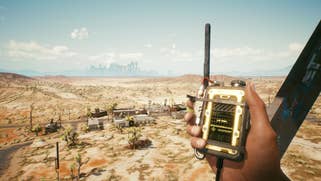
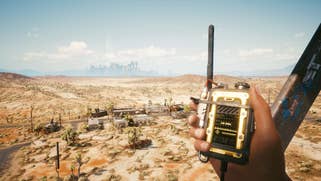





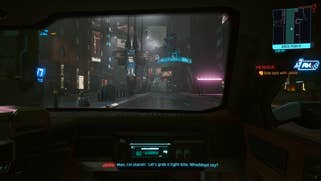

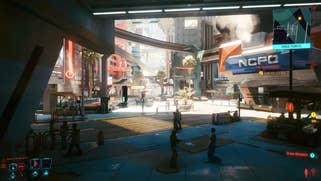
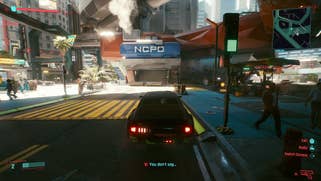





In summary, the Stadia rendition of Cyberpunk 2077 runs at a lower resolution than Xbox Series X, though its quality mode delivers a higher pixel count than PlayStation 5. Sony's console is still the place to be for the most consistent high frame-rate experience, but the Stadia port has advantages of its own. It compares very favourably with the Series S version and in many scenarios, it seems capable of delivering more detail than any of the console builds - certainly until the bespoke next-gen patches arrive. In the meantime, Stadia is looking good precisely because a porting house with a known pedigree took the codebase and delivered a bespoke rendition of the game for the system, something that the next-gen consoles don't have yet.
But there's more to it than that - there are the concepts of availability and accessibility. Right now, we can't recommend Cyberpunk 2077 for play on last-gen systems, while the barrier for entry for a really decent experience on PC may also prove challenging to many - a gaming PC with a six core/12 thread processor and a modern GPU is required and that's not cheap. Stadia isn't the perfect solution, but you don't need to buy a new console to play it, it works just fine on a laptop or phone - you just need a decent internet connection. Mine doesn't cut the mustard (despite seemingly exceeding Stadia spec) but then again, it doesn't stream GeForce Now or even the lower bandwidth xCloud without issue - there seem to be issues at the ISP. With that in mind, I suspect most people who do meet the Stadia spec requirement will get a perfectly reasonable experience (though contention with other users on the same connection will always be an issue).
Also interesting is that both quality and performance modes in Cyberpunk 2077 are available whether you have the Stadia Pro subscription or not. Actual 4K streaming is still the preserve of the premium tier, but quality mode super-samples down to 1080p for non-Pro users - and it works. Just the presence of an in-game toggle is progress too: I was frustrated by Stadia ports like Red Dead Redemption 2 which forced you to play at higher fidelity mode at 30fps on a 4K screen, even if you'd rather play at 1080p with a higher frame-rate instead. Hopefully in-game toggles will become the norm on Stadia titles going forward.
Last year, we looked at Cyberpunk 2077 running on PS5 and Xbox Series consoles and I did mention that the Stadia version was worth a look. My short hands-on there prompted me to go much deeper for this piece, and I'm glad that I did. While controversial in many ways, Cyberpunk 2077 is a quality game, but the hardware requirement to get a good experience is clearly onerous. This is where cloud systems like Stadia offer a distinct advantage - and while not perfect, the quality of this port is definitely very decent.








